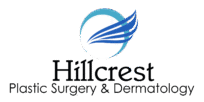What are Keloids?
A keloid is an abnormal proliferation of scar tissue that forms at the site of skin injury (eg, on the site of a surgical incision or trauma) Keloids do not regress and grow beyond the original margins of the scar. One should not confuse keloids with hypertrophic scars. Hypertrophic scars do not grow beyond the boundaries of the original wound and can reduce over time.
Who Can Get Keloids?
Keloids are found only in humans and occur in 5-15% of wounds. They occur in both males and females. They can cause pain, itching, affect wearing of clothes as well as catching on clothes and garments. The frequency of keloid occurrence in persons with highly pigmented skin is 15 times higher than in persons with less pigmented skin. The average age at onset is 10-30 years. Of note, keloids are much less common in extreme ages.
What Can Cause Keloids?
Keloids are benign dermal fibroproliferative tumors with no malignant potential. They are not cancers. The first description of keloids was recorded in the Smith papyrus regarding surgical techniques in Egypt around 1700 BC. It is not entirely understood what causes keloids. Many cellular level responses are thought to contribute. Research into their causes and treatments continues to evolve and we at the keloid clinics of Hillcrest Dermatology and Plastic Surgery keeps abreast of all new developments and treatments.
How Can Keloids Be Treated?
There are many treatment options for keloids. A combination of options are typically used in keloid treatment. At your consult we will review your history and come up with a plan that best individually suits you.
Superficial Radiation
One of the newest and most exciting areas of treatment for keloids is superficial radiation treatment. Radiation is used in combination with surgical excision in order to prevent recurrence. Some studies have shown that radiation combined with surgical excision can achieve good to excellent cosmetic results with an 80-94% prevention of recurrence. Typical treatment has a patient getting radiation treatment post excision with just three 5 minute sessions of radiation without any painful injections of medications. Side effects include but not limited to hyperpigmentation and telangiectasias.
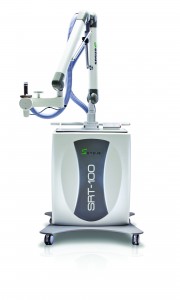 |
| SRT-100 Machine Our superficial radiation treatment machine- a highly effective treatment for keloid scars. |
Occlusive dressings
Silicone gel sheets and silicone occlusive dressings have been used with varied success in the treatment of keloids. The sheets can be worn for as long as 24 h/d for up to 1 year, with care to avoid contact dermatitis and skin breakdown. In some studies, the response rate has been as high as 79%, showing substantial reduction in redness, scar elevation, and itching. Complete resolution has not been noted.
Compression
Mechanical compression dressings have been used for the treatment of keloid scars. Compression devices are usually custom-made for the patient and are most effective if worn 24 hours per day. Pressure devices include Dacron spandex bobbinet fabric, support bandages, or zinc oxide adhesive plaster. Earlobe devices are available for keloids resulting from ear piercings. The recommended level of pressure is 25 mm Hg, but good results have been observed with pressures as low as 5-15 mm Hg. It is believed to reduce oxygen tension in the wound by occluding small vessels and affecting the keloid at the cellular level.
Corticosteroids
Steroid injections into the keloid have been used with some effectiveness for years. These injections decrease dermal thickening. Steroids can be used by themselves or in combination with other therapies including excision. They can be injected before surgery to decrease the size and then continued after surgery. Some side effects of corticosteroid injections include atrophy of the subcutaneous tissue and hypopigmentation. Most of these adverse effects can be avoided by injecting the as little of the infusions as possible yet still remaining effective at treating the keloid.
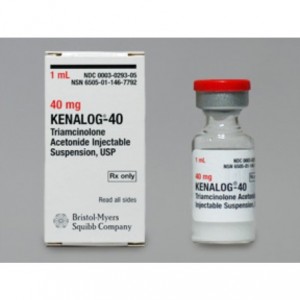 |
| Kenalog is a popular corticosteroid injected directly into scars to decrease size |
Excisional surgery
Simple excisional surgery should involve the least amount of soft tissue handling to minimize trauma; also, plan the closure with minimal skin tension along relaxed skin tension lines. Unfortunately when used alone without other treatments the keloids have a very high rate of occurrence. We do not recommend excision alone due to such high recurrence rates.
Cryosurgery
Cryotherapy uses liquid nitrogen to cause cell damage and to affect the tiny blood vessels, causing the blood vessels to clot and thus decreasing oxygen delivery to the keloid. Side effects are pain and depigmentation. Cryotherapy used in combination with steroid injections has an even greater response rate, with objective success reported in 80+% of patients.
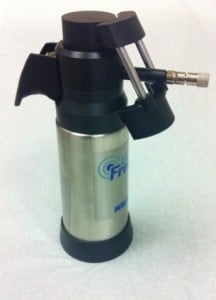
|
| Our cryotherapy canister |
Laser therapy
Laser therapy by itself is not a very efficacious way of treating keloids. It is used as in a multi treatment modality in decreasing recurrence of keloids. It destroys the tiny vessels in the keloid scar thus reducing keloid recurrence.
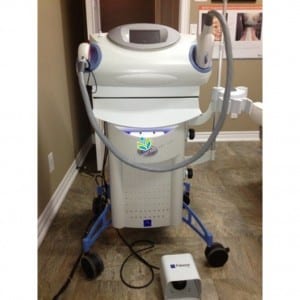
|
| Our laser |
Interferon Therapy
Another therapy is intralesional injection of a drug called inteferon. It acts by reducing substances at the cellular level that cause keloids. This is also done in combination with excisional surgery. 5-Fluoruracil: 5-fluorouracil ( a drug used to treat skin cancers) is injected into the keloid and has been found to decrease the recurrence. It can be combined with steroid injections to produce the best results.
Imiquimod Therapy
Imiquimod is a cream that is placed on the keloid site after excision to decrease the rate of keloid recurrence. Imiquimod is cream that is normally used to treat skin cancer. Hyperpigmentation is a side effect.
What Should You Bring to Your Consultation?
Medical history, currents medications, past surgery history. If you have had treatment of keloids by other physicians please bring in a history of the treatments. We can develop a treatment plan based on what has and has not worked for you in the past.
Why Choose Hillcrest Plastic Surgery for Keloid Treatment?
We have a strong interest in the treatment and care of keloids. We have a unique practice of plastic surgeons and dermatologists who together coordinate care in the various treatment modalities. We are the only practice in the state of Florida to provide this type of care. The key to treatment of keloids is to have the full range of treatment options available and to have a multidisciplinary approach to this treatment. Hillcrest Dermatology and Plastic Surgery has the all of the tools for fighting keloids at their disposal. Our superficial radiation machine, laser machine , cryotherapy, and multiple drug modalities are all used in keloid treatment. Our team of highly trained plastic surgeons use their unique skills in the excision and closure techniques that best minimizes the appearance of the scar. The team then discusses the best treatment options and protocols for each individual patient.
